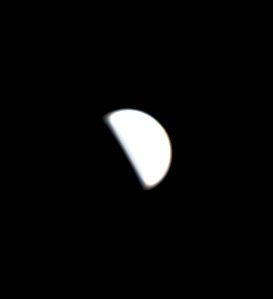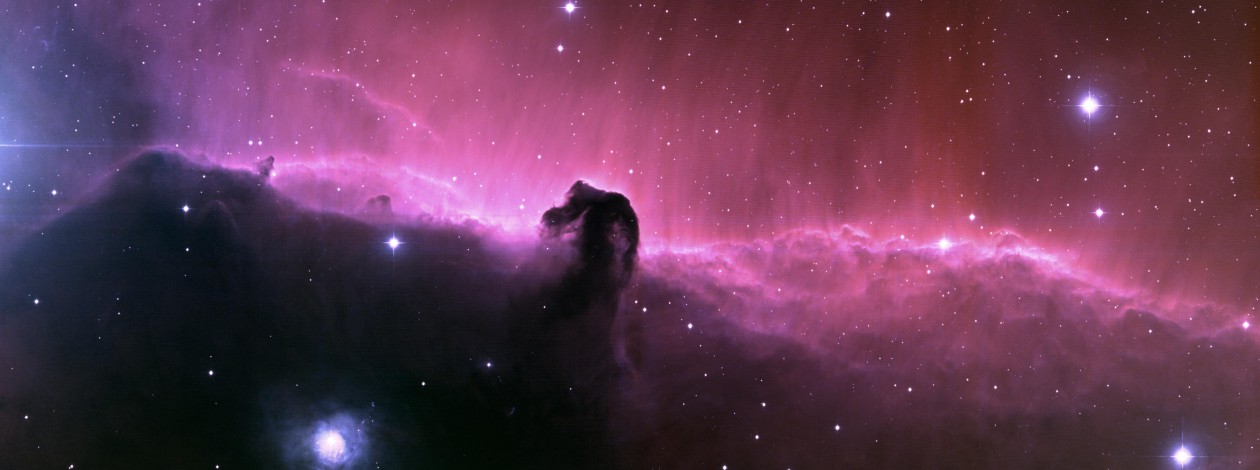
-Image credit NASA
Venus
When I first moved from the high deserts of Nevada to The tropical warmth of Florida I thought I would never have the ability to get an image of Venus. I was wrong.
Venus is the second planet to the the sun, orbiting at an average distance of 67 million miles (108 million kilometers), Venus is 0.7 astronomical units away from the sun. (1AU is the same as earth’s orbit.)[1] In order to see it you have to look right before sunset and right before sunrise, depending on what time of year it is. It is usually low in the horizon. Being in Nevada I had little time to catch it, usually about an hour or 2 before it went too low on the horizon. When I moved to Florida I forgot to take into account how far south I was. I assumed the trees would obscure my view or shorten what was already a short viewing time. Fortunately being this far south moved it up considerably in the horizon!
Before I got into some things I learned on this while trying to observe and photograph, I want to go into the in depth for everyone on the planet itself.
Venus Facts:
First off how big is it? Venus has a radius of 3,760 miles (6,052 kilometers), which is about as big as earth’s but slightly smaller.[1] It is similar in size however its mass is 81.5% of Earth’s.
The most notable and interesting thing about Venus is it’s atmosphere. The atmosphere is 96.5% carbon dioxide, with most of the remaining 3.5% being nitrogen.[2] The thick atmosphere of Venus is one of the best examples of a greenhouse effect. It traps the sun’s heat, and causes Venus to have the highest temperature of all the planets in the solar system. The surface temperature gets higher than 880 degrees Fahrenheit (470 degrees Celsius). While it is the hottest planet the many layers of the atmosphere has layers with different temperatures. About 30 Miles from the surface of the planet the temperature is similar to earth’s.[1] Oddly in stark contrast, at an altitude of about 125 kilometers above the surface, the Venus Express probe has recorded, the temperature drops to a chilly -175°C[3] This atmosphere is so thick that the atmospheric pressure is ninety times that of Earth.

This same atmosphere and heavy clouds are the cause of so much difficulty taking the photographs, which I will cover in a minute. The following two data sets show the difference between first Earth’s atmosphere and then Venus.


The Surface is pretty barren and rocky, Photographs are difficult to get of the planet’s surface due to the extreme heat. The probes last a short time before overheating and ceasing to function. Here are a few photos of the surface:

Image credit Russian Aviation and Space Agency, now known as the Roscosmos State Corporation
The surface of Venus as seen by the Venera 13 spacecraft. The top picture shows the actual color of the surface. This orange tint is due to the cloud cover and how it filters the light to the surface, so this is how it would look if you were standing there. The bottom photograph shows how the surface would look if it was under earth’s lighting conditions.
A larger view is here:

What does it sound like? The Russians sent the Venra series of probes to the planet and from what I have been able to uncover is that there was a Venra 14 with microphone installed. this is the first probe to record sounds from another plant with in our hearing range. I am linking the audio link here .
The Upper atmospheric winds are pretty strong. The winds have been recorded at about 224 miles (360 kilometers) per hour. Atmospheric lightning bursts light up these quick-moving clouds. Speeds within the clouds decrease with cloud height, and at the surface are estimated to be just a few miles per hour.
The Planet has a weak magnetic field due to it’s slow rotation despite having an iron core. It has no moons and no rings around it. . .[1]

Venus Orbits the same direction but the planet rotates opposite of earth. Venus and Uranus rotate the opposite direction of the rest of the planets.[4]
![Orbit of venus Image credit: By Lookang many thanks to author of original simulation = Todd K. Timberlake author of Easy Java Simulation = Francisco Esquembre (Own work) [CC BY-SA 3.0 (http://creativecommons.org/licenses/by-sa/3.0)], via Wikimedia Commons](https://sixalberts.wordpress.com/wp-content/uploads/2017/02/220px-venusorbitsolarsystem.gif?w=474)
Image credit: By Lookang many thanks to author of original simulation = Todd K. Timberlake author of Easy Java Simulation = Francisco Esquembre (Own work) [CC BY-SA 3.0 (http://creativecommons.org/licenses/by-sa/3.0)%5D, via Wikimedia Commons
Phases of Venus
Due to it being closer in orbit to the sun than Earth, we see it in phases much like the moon. Honestly instead of explaining the retrograde and using a whole bunch of math and words one picture on this is easier.

-created by Rachel Knott using NASA material.
Photographing Venus
Currently my mount had to go back to Celestron for warranty repair. While trying to take photos of Venus I had the same issue arise as many other nights, hence my slow article output and not many photos this year. Taking photos with it has been a real challenge when it just stops tracking and is not responsive.
I had photographed venus a while back using the 6″ scope, my 6SE, and had the challenge of getting it before it fell to low on the horizon.

What I didn’t take into consideration when using the 1100 HD Edge was how much of a light bucket it is. When looking at the moon, for example, it physically hurts to look with out using the moon filter. I attempted to use filters when recording the video to be thrown into Autostakkert2, but this scope pulled in so much light that it washes any detail out. I was left with some nice phases.




As you can see the lesson from this is that while the scope aperture being large is nice, it can washout color and leave you with not a whole lot of detail. I took these using the red, blue and light yellow filters to try to get different detail. Honestly, not using any filter was a complete wash out and it was so bad it was hard to tell where the terminator was on the planet.
The next step I am going to try is to mount the 6se on the mount when it returns and see if I can get the color and cloud detail. I am going to attempt this between classes and see if I can do anything with the good old 6SE Nextstar mount. What this lesson should show is that there is not one telescope or one piece of equipment that does everything. As you expand your equipment, don’t get rid of anything unless you have no choice!
As far as equipment, I used the NCelestron C1100 HD Edge, the Celestron 95506 Skyris 236C CMOS camera and the yellow, red and blue filters. Unlike in the 6se, the type of filter did absolutely nothing except show the terminator, I will absolutely revisit this with the 6se.
Speaking of Planetary Filters, What filters should you use? I have a guide here (editorial note: as of today I have to write this article, which will be next, I just am keeping it as a place holder. )
References;
-
Venus: In Depth, NASA, http://solarsystem.nasa.gov/planets/venus/indepth on line, accessed Febuary 6, 2017.
- “Atmosphere of Venus”. The Encyclopedia of Astrobiology, Astronomy, and Spaceflght. Retrieved 29 April 2007.
- Mahieux, A. “Densities and temperatures in the Venus mesosphere and lower thermosphere retrieved from SOIR on board Venus Express: Carbon dioxide measurements at the Venus terminator.” Journal of Geophysical Research, vol. 117, E07001, 15pp (2012). doi:10.1029/2012JE004058
-
Squyres, Steven W. (2016). “Venus”. Encyclopædia Britannica Online. Retrieved 7 January 2016.


















